 1 / 7
1 / 7

 1 / 7
1 / 7

Collecting classic cars requires as much patience and effort as passion and emotion. Ayşe Ataman, one of the leading figures in this field in Turkey, is totally “immersed in the business”, dazzling with her rally championships and association activities. The collection that became a museum settled at its current home in 2000. Cars and motorcycles produced between 1920s and 1980s are exhibited at the Ataman Classic Car Museum alongside various objects ranging from gas pumps to music boxes. The museum was initiated with the mission to become a living, dynamic institution and it hosts a wide range of events and activities. We had a very pleasant conversation with Ataman about collecting classic cars and her museum.
How did your interest in classic cars emerge? How did you become a collector?
I actually have been collecting things since I was born. For instance when I was a child I loved Barbies and I have a serious Barbie collection. I also collect cigarette cases although I am not a smoker. The entire family loves collecting. But I have always had a crush on cars. I used to follow them as a fan during my high school and college years. Once I graduated from college and returned to Turkey, my father gave me a very old junky car as a graduation gift: a 1939 Mercedes. We both wanted to do something around this subject and it became an excuse for it. I began to put this car together and my knowledge in the field developed as I kept putting cars together. I spent my first 4-5 years at the industrial neighborhood.
What do you exactly mean by “putting together”?
Normally, these cars do not come in the condition you see them at the museum. They are subject to heavy restoration and this process is referred to as “putting together”. The vehicle is entirely dismantled, each piece is repaired and then you put the car back together.
I am more involved in the Corvettes, Thunderbirds and Mustangs of the 1970s. You always want to go back to what you remember from your own childhood. Sometimes at the age of 13-14 a car passes by and although it does not belong to your era it stays in your mind. You try your best to acquire it.
You have already told us about your first car in the collection. How about your most recent acquisition?
I can inform you about the cars that are currently being restored. We have a mechanic room downstairs and there we have a 1951 Chevrolet whose “putting back together” continues. Some cars are restored in 6 months and for others it takes up to 5 years. We also have a Trabant at the courtyard. We want it to be part of the museum. We import some missing parts from abroad. We handle others here; for instance we renew the chromage. We replace the upholstery.
Are all the vehicles we see here ready to depart once we start the engine?
I hope so. Our job is not like collecting painting or sculpture. You need to take care of these cars, to start them and to run them. In this sense it is not good for them to constantly rest at a museum. Actually we have a mechanics team and we regularly run the cars and take them downstairs. It is important to keep them alive; otherwise the car lets itself go.
We may also say that preserving history is in itself a struggle.
Which one of these cars can we come across on the streets today? All these cars are slowly becoming extinct and eventually disappearing in the entire world. In Europe it is problematic to take them out; as we currently use unleaded fuel, these vehicles require a substance to be added to their fuel. As they have very big engines they also have emission problems.
Do the license plate and the certificate of ownership become a problem as well?
All our vehicles have a license plate and a certificate of ownership. In Europe and the U.S.A., classic cars have special plate numbers and they are exempt from taxes. Unfortunately such things do not exist in Turkey.
What is the focus of the collection?
While building a car collection, or even as you buy one single old car and deal with its repairs, you always go back to what you remember from your childhood. We started this collection with my father in 1985-86. As he stayed in the U.S.A. for a long time, he is deeply involved in the American cars of the 1950s, those cars he loves and remembers. We may even include the late 40s here. We have a 1937 car which is the same car his father had. I am more involved in the Corvettes, Thunderbirds and Mustangs of the 1970s. You always want to go back to what you remember from your own childhood. Sometimes at the age of 13-14 a car passes by and although it does not belong to your era it stays in your mind. You try your best to acquire it.
Do you work with consultants or do you act upon your own taste?
We completely act upon our own “curiosity”; I don’t want to refer to it as “pleasure” either. Once you buy consulting services, this activity becomes investment-oriented. Of course some people emerge and help you find the car in your mind. Finding that specific vehicle in the U.S.A. is in itself a huge endeavor. But we always do the selection ourselves.
So it does not proceed as “I like it, so I buy it”.
Absolutely not. First of all, you have to know how a car works. You have to be able to fix it, to understand what you see inside it once you open up the hood. You must be able to evaluate the level of knowledge of those people who help you with the restoration, and direct them. You must work very meticulously.
How many cars do you have in the collection? Any highlights?
We have 69 cars. 85 including motorcycles. I am particularly interested in a 1954 Corvette. I love most of the Corvettes because they are made of fiber and look like sharks. I also love the Mustang for it is a 64,5 (between 1964 and 1965), i.e. its earliest years. If we look at it from a special item point of view, we have rare examples in the European section. For instance Mercedes Gullwing is the museum’s “top” car, for Mercedes produced a very limited number of them. After 1 or 2 years of production it stopped its production due to very low demand. Its appearance is also very different. Facel Vega also has a special place here. We had to search for it a lot, it was very hard to find; a French car produced in the 50s for a short period of time, and not widely known. Its engine comes from Chrysler, as they had a special contract with them. It also looks amazingly beautiful. Well, which one is not?
There are other objects here as well… Music boxes, gas pumps, neon labels…
At the end of the day, we were mostly in the U.S.A. for collecting these cars, conducting research, attending auctions and visiting garages. Starting from 1930s, Americans have been the leaders of the automobile industry; so most of the heritage is based there. Of course while we visited those places that sold car parts we also came across these other objects and we started to collect gas pumps. Then original gas station sings were added to them. In the U.S.A. gas stations also sell beer and food and they have neons everywhere. And then came the old car photos… Old quadrants, chocolate machines… But can I do it again now? No, impossible. It is a huge effort not only to buy them but also to select them, love them, taking care of them, repairing them and even bringing them here.
We arranged most of these as the American Hall; we used the colors and the materials of the 1950s’ American “Diner” concept. The other hall, on the other hand, hosts our European cars; there it feels more British. We also have an English pub at its upper floor. We have trucks and vans at the hall downstairs.
What is the most challenging aspect of collecting classic cars?
Space. Definitely. We have to avoid decay. These cars must be kept in a room with controlled humidity and temperature. We haven’t had a museum in mind when we started collecting cars; we were just passionate about them. As the number of cars grew, we acquired this placed we called the “garage”. Once they didn’t fit in there either, we moved here in 2000 as a more permanent location, along with our 14-year-old heritage. Our idea of creating a museum and exhibiting the cars to the general public was born at that point.
First buy a modest car that is not too expensive and put it together. It is crucial to buy the cars that follow with awareness. For this is the way to learn. I stated like this too; for the first car I spent all my Saturdays at the industrial neighborhood for a couple of years, as I knew nothing at that time.
What are your recommendations for the beginners in collecting cars? Where should they start from? Which sources should they use?
First buy a modest car that is not too expensive and put it together. It is crucial to buy the cars that follow with awareness. For this is the way to learn. I stated like this too; for the first car I spent all my Saturdays at the industrial neighborhood for a couple of years, as I knew nothing at that time. And then there is the most important book on the subject, the Hemmings. In the past it used to come out in very thin, newspaper type of paper, it had very small texts; everyone selling the car, finding its parts, making announcements is there. Now it is also accessible online; but it does not give the same pleasure. But the internet is completely another thing, of course.
When we started in 1986, it was much harder to access information and to find parts. I wrote a letter to Mercedes Germany for the Mercedes in the collection and 3 months later they sent me a microfilm catalog. I had the images printed after barely finding a machine at Boğaziçi University. Nowadays you access all kinds of information on Google. But on the other hand, there are various brand groups abroad, like XK 120 Jaguar Club. Their support in solving your difficulties is crucial. So is the support of our clubs. If someone is putting together a car with the same model as yours, he or she may want to come and see how we put it together, for instance.
Do you personally use the cars?
Of course. When we first started in 1986, there was already an established level of curiosity on the subject in Turkey. In 1990 we founded Turkey’s first classic car club with enthusiasts like ourselves. Now it has become an association. Currently there are many different clubs including those in Ankara and İzmir. People with the same area of interest want to organize activities together. At first we used to organize gatherings with meals featuring our cars. Then we became members of the international federation; we began to organize rallies within the framework of their rules and to race in them. Our club is still the organizer of Turkey’s biggest classic car rally. Two big rallies take place, around October 29 and May 19 consecutively, and many other smaller rallies throughout the year. We also feature our museum cars in such activities; this way they have a chance to run and they are used. I also participated to several international rallies. I worked as the pilot, co-pilot, judge, organizer and association president in several occasions.
Where do the association’s rallies take place?
Bodrum, Abant… It depends. We also work very closely with the Greek classic car club. We are neighbors already; we organize rallies together. We sometimes go to Thessaloniki and back. Many rallies take place in Greek islands. We participate to them as well. In Turkey, regional clubs organizes similar activities and tours too. But since our club is the first, it has a different investment and heritage compared to the others, especially in terms of infrastructure. We are able to organize large-scale events.
Do classic car fairs exist?
No, for it is not a contemporary material. Auctions exist instead. A few took place in Turkey but no more in the last 1-2 years. It is much more widespread abroad.
Are there any other museums in Turkey similar to yours that you find interesting?
Sure. For instance, there is this great new formation in İzmir founded by the Özgörkey family. The deceased Mr Mehmet Arsay has started his collecting adventure alongside us, now there is this museum led by his son and my close friend Cengiz Arsay. Artam Museum and Ahmet Öngün’s personal collection are also important.
As a museum do you publish catalogs or similar items?
We have a calendar we publish every year which is very famous both in local and international car communities. We are also preparing our first museum catalog for our 15th anniversary and we hope to launch it in the spring next year.
What are the visiting times for your museum?
Our museum is open to public on Saturdays. But we do not refuse those visitors who come on other days either. Most of them come from other cities to visit us. We organize school trips and many other events. What matters to us is to keep the museum alive and to make it accessible to the public.
This interview is conducted by İpek Yeğinsü and Güliz Özbek Collini on behalf of Art50.net for TEB Private.



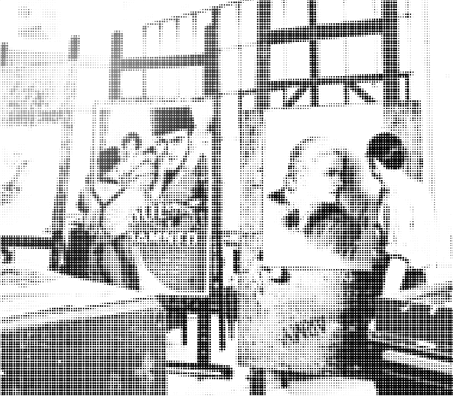



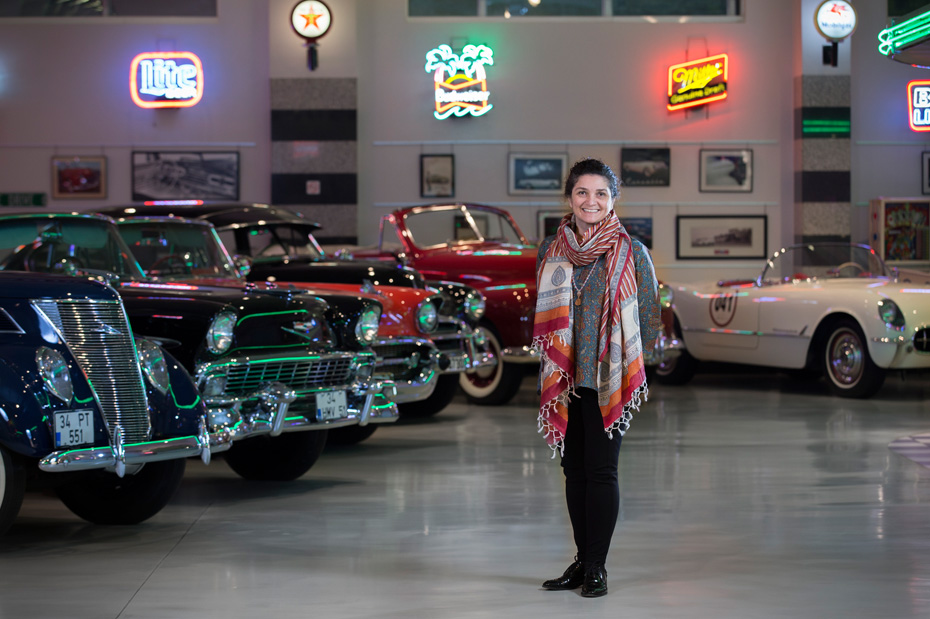
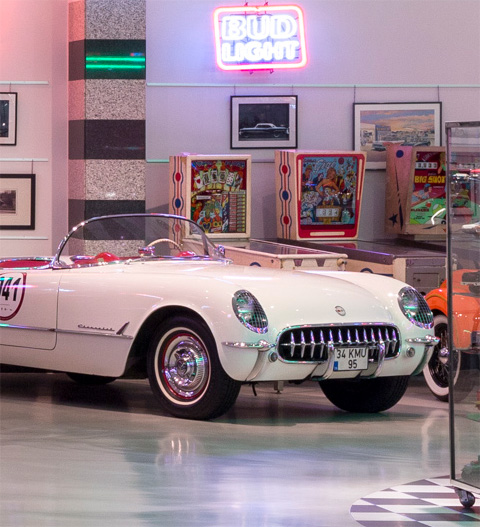
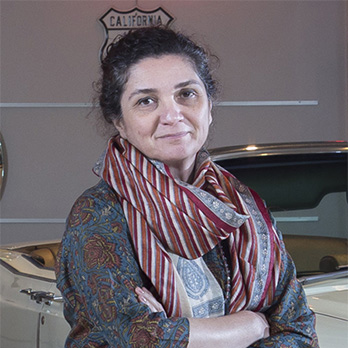

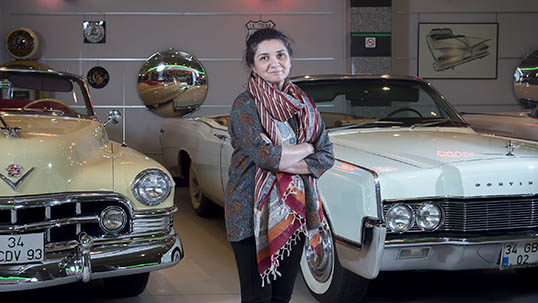
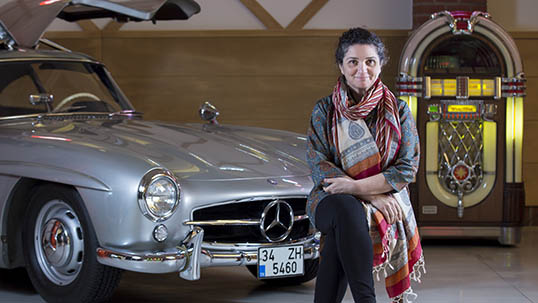
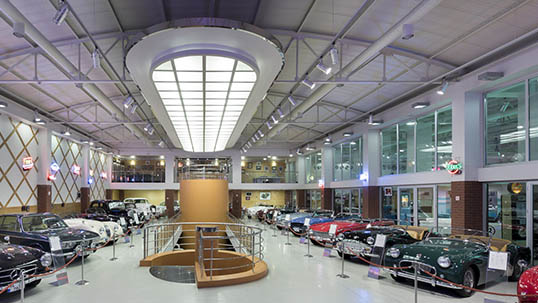
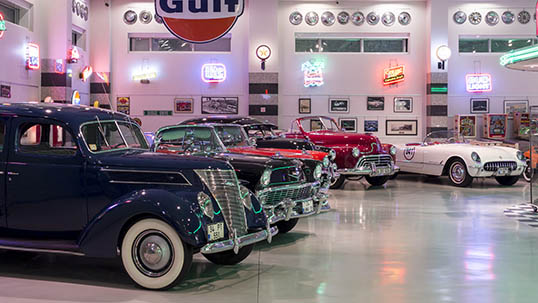
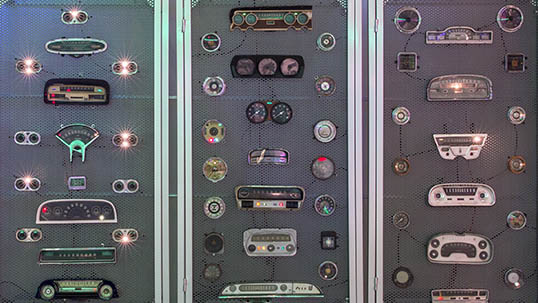
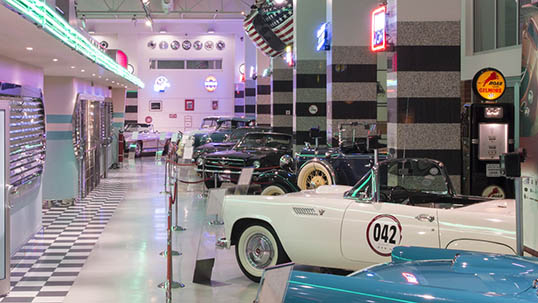
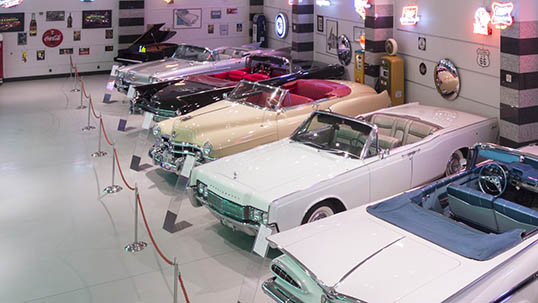



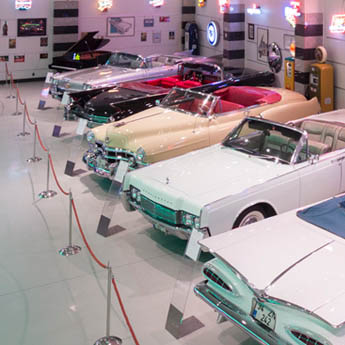
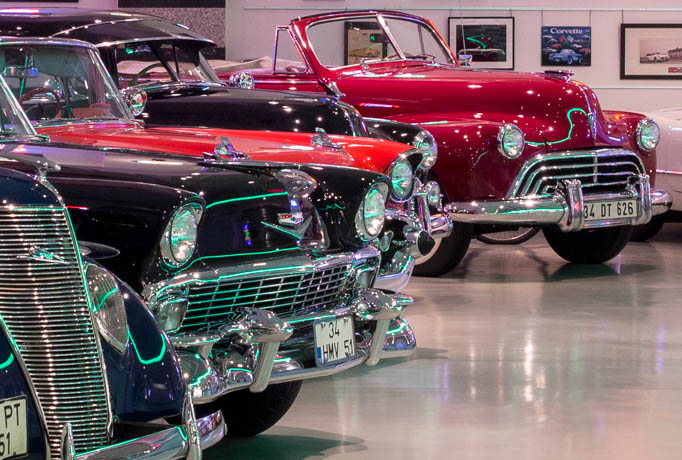
 UP
UP


